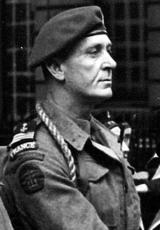Operation Overlord
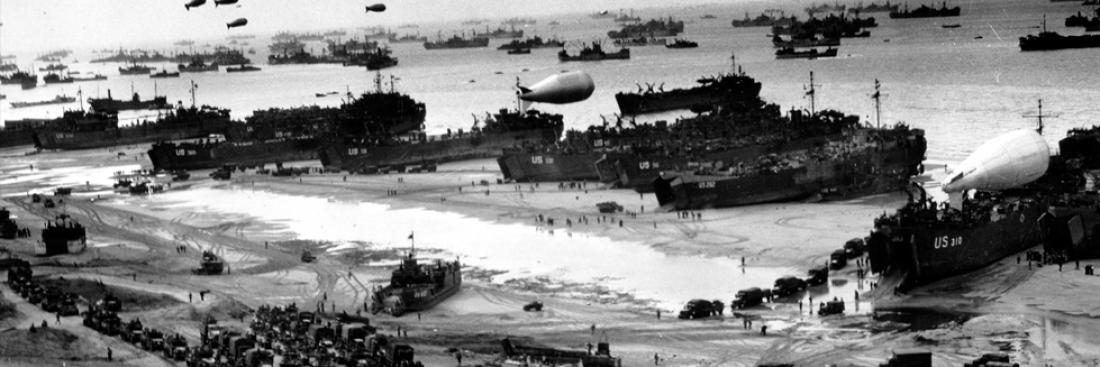
This was the code name for the Battle of Normandy.
In early June 1944, the BBC warned the French resistance that the Allied landing was imminent by broadcasting an encoded message: ”Les sanglots longs des violons de l'automne” (Long sobs of autumn violins) (Verlaine - Chanson d'Automne (Autumn Song)). On 5 June, it announced the start of the operation itself with the next line of the stanza: ”Blessent mon coeur d'une langueur monotone” (Wound my heart with a monotonous languor), telling the Resistance to immediately sabotage operations, in particular on the French railroad network and along the enemy escape routes.
5 June 1945
Operation Neptune (commonly known as D-Day) began at 10 pm. Five assault forces were formed departing from England in convoys (6,939 ships) taking 130,000 men across the Channel through corridors cleared of mines.
Composition: One assault division per beach and two reinforcing forces by sector (U and O for the Americans, G, J and S for the British and the Canadians).
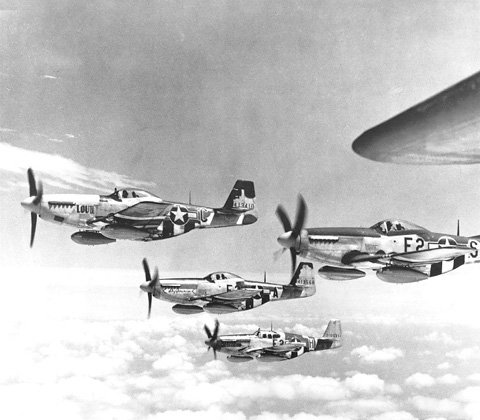
Model D P-51 Mustangs flown by American fighter squadrons. Source: US Federal government, public domain.
6 June 1945
Landing operations
Air preparation (0:05 am): Bombing of coastal batteries between Havre and Cherbourg. Intervention of airborne divisions: US 82nd and 101st: 15,500 men, 1,682 planes and 512 gliders. Objectives: - ensure a beachhead on the West bank of the Merderet, - Take Sainte-Mère-Eglise, Beuzeville, Pont-l'Abbé, - Neutralise the area between the Orne and the Dives rivers, - Seize the battery in Merville and designated bridges. - 0:10 am: Parachute landing of the scouts. - 0:20-0:40 am: Commando operations by the scouts of the 6th airborne division on the bridges, including Pegasus Bridge, over the Orne and Merville gun battery. - 1:00-2:30 am: Successive waves of parachute landings of regiments and brigades made up of American and British divisions. - 03:20 am: Arrival of heavy equipment and reinforcements by glider. - 04:30 am: Taking of Sainte-Mère-Eglise by the US 82nd Airborne Division (505th regiment).
Naval bombardment
- 05:50 am: Start of 'hosepipe' fire targeting the German positions until the arrival of the landing crafts and vessels.
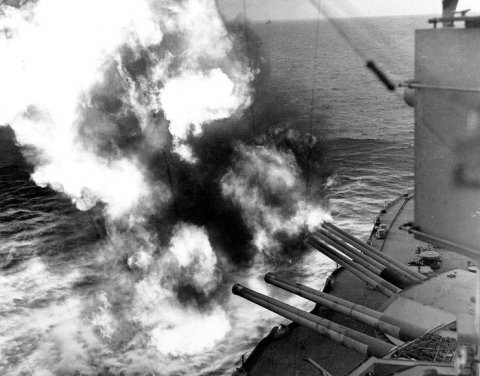
The USS Nevada bombing of German positions near Utah Beach on 6 June. Source: US Federal government, public domain.
Aerial bombing
- 06:00 am: Heavy and medium bombers crossing over the fortifications on the Norman coastline (1,333 bombers - 5,316 tonnes of bombs). Bombings ceased 5 minutes before H hour.
Landing of the troops
- 06:30 am: H-Hour for the Americans (Utan and Omaha)
- 07:10 am: Attack by the 2nd Ranger Battalion at Pointe du Hoc.
- 07:30 am: H-Hour for the British (Gold and Sword)
- 08:00 am: H-hour for the Canadians (Juno) Successive surges of assault, mine-clearing, artillery and other units.
Set objectives
UTAH: Create a beachhead between Quineville and Sainte-Marie-du Mont. Join up with the 82nd and 101st Airborne Divisions.
OMAHA: Reach the Isigny-Trévières-Vaucelles line. Neutralise the battery at Pointe du Hoc.
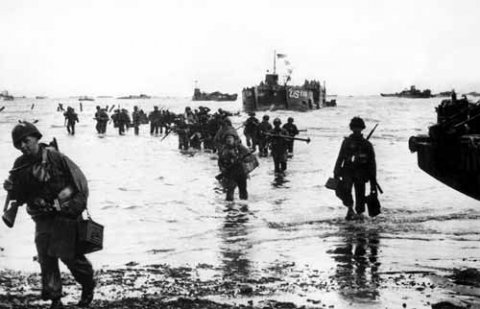
Ohama Beach on 6 June 1944. Source: National Archives USA, public domain.
GOLD: Reach the N13 highway and take Bayeux. Join up with the Canadian 3rd Division in the east and the American troops in the West.
JUNO: Form a deep beachhead including the hills in Caen and Carpiquet. SWORD: Seize Caen. Join forces with the 6th Airborne Division.
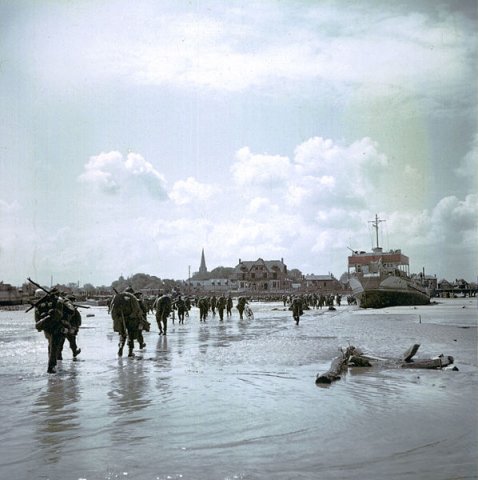
The Canadian infantry lands on Juno Beach and marches to Bernières-sur-Mer on 6 June 1944. Source: Canadian National Archives.
At the end of D-Day, the allied forces had landed over 135,000 men and formed beachheads of varying depths along the Norman coast. In the different sectors, not all the designated objectives were accomplished and the situation was precarious in Omaha. Certain German positions resisted and there was a huge effort to make to reinforce the front. Significant numbers of men were lost, over 10,000 killed, injured or missing, but less than estimated. The 6 June 1944 will remain an unforgettable date in the history of the liberation of France and Europe.
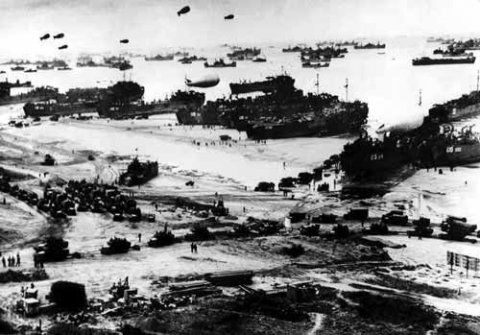
Allied vehicles and ships the day after the landing. Source: National Archives USA, public domain.
External websites:


